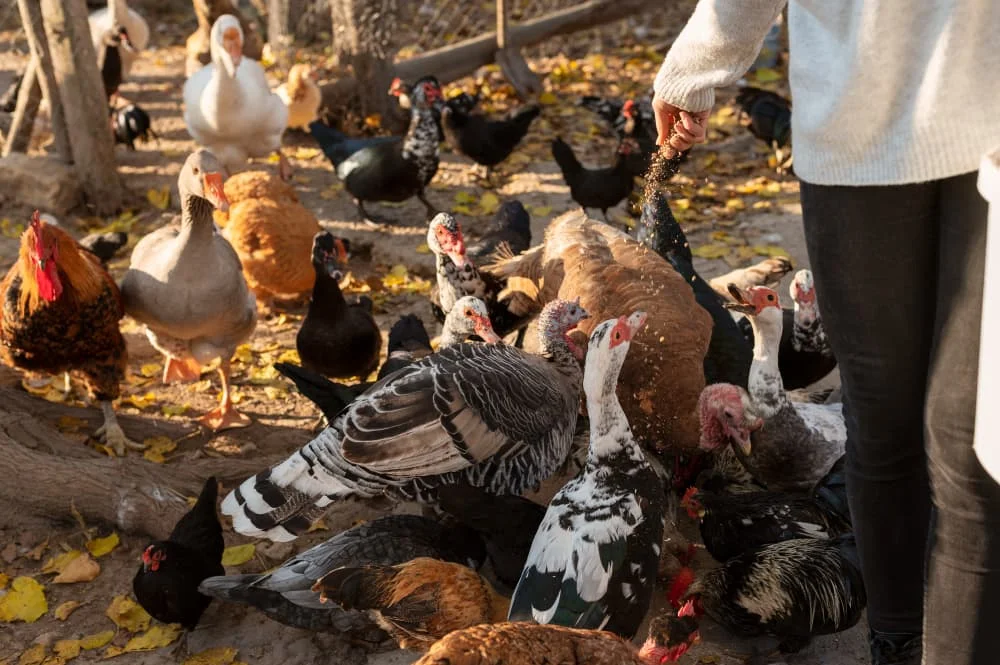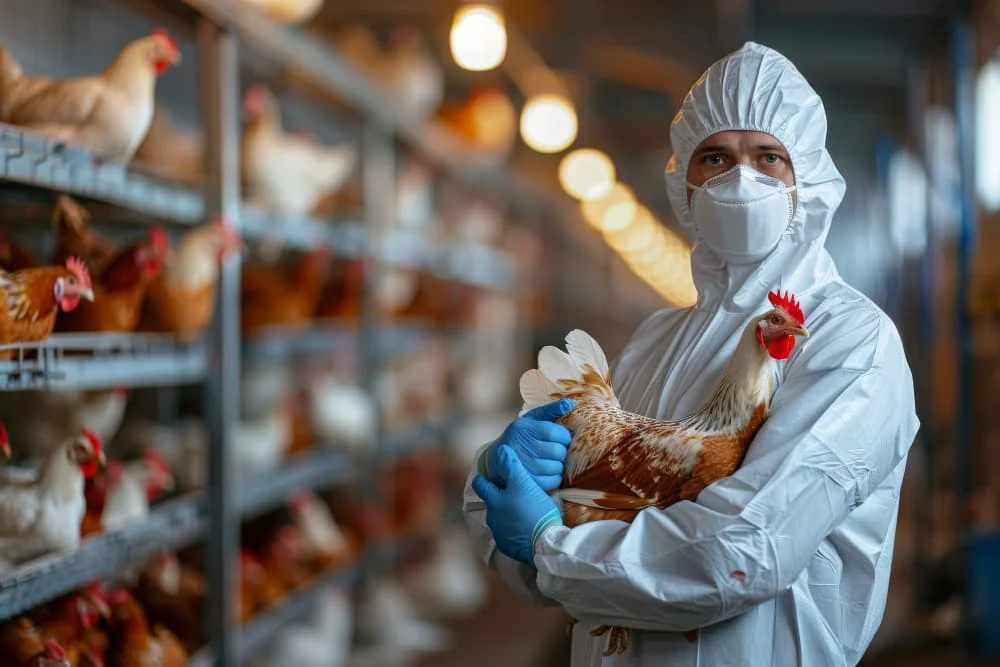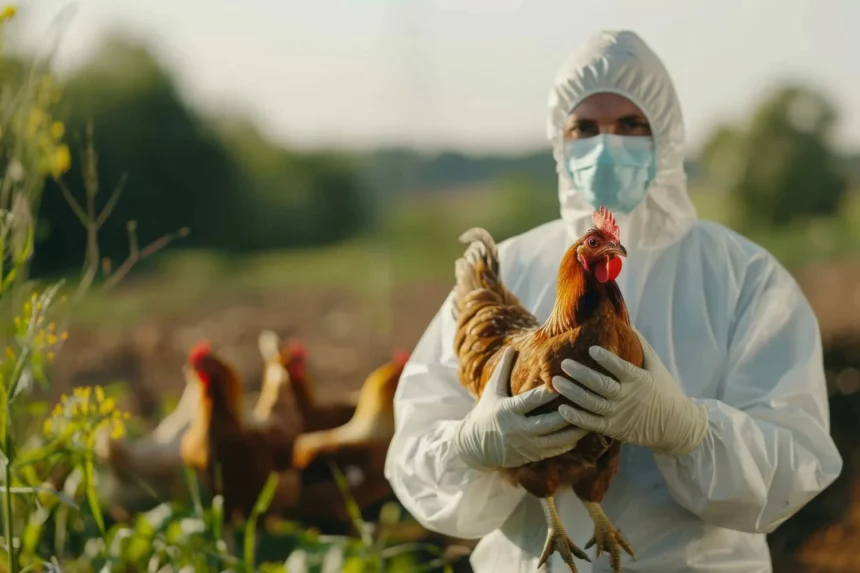Recent news of bird flu outbreaks and increasing reports of avian influenza can understandably cause concern. Although human cases are rare, knowing the facts about this type of influenza is essential to protect yourself and your family. We explain how bird flu spreads, the symptoms you should look out for, and most importantly, what you can do to minimize your risk. By understanding these key points, you can stay informed and take practical steps to safeguard your health.
What is Bird Flu?
Bird flu is a disease caused by influenza A viruses that primarily infect birds. These viruses occur naturally among wild aquatic birds around the world and can also infect domestic poultry and other animal species. There are many different strains, which are broadly classified into two groups based on their ability to cause disease:
- Low Pathogenic Avian Influenza (LPAI): Typically cause mild or no symptoms in birds.
- Highly Pathogenic Avian Influenza (HPAI): Lead to severe illness and high mortality rates in birds.
Some strains, such as H5N1 and H7N9, have the potential to infect humans, although this remains relatively rare. Human infections usually occur from direct contact with infected birds or contaminated environments rather than through person-to-person transmission.
This potential for cross-species transmission makes avian influenza a significant public health concern. Most human cases of bird flu are associated with HPAI A viruses, and while the disease primarily affects birds, there is ongoing concern that the virus could mutate and become more easily transmissible among humans.
Symptoms of Bird Flu
Recognizing the signs of bird flu in both birds and humans is essential for early intervention and preventing further spread. The specific symptoms vary based on the virus strain and the species affected.

Bird Flu Symptoms in Humans
Although human infections are rare, they can be severe. Human symptoms often resemble those of seasonal flu but can escalate quickly into serious respiratory issues. Key symptoms include:
- Fever: Typically high, at or above 100°F (38°C)
- Cough: Usually dry, though it may sometimes produce phlegm
- Sore Throat: A scratchy or painful throat
- Muscle Aches: Often severe and widespread
- Headache: Can be intense
- Fatigue: Extreme tiredness and weakness
- Shortness of Breath: Difficulty breathing or chest tightness
- Pneumonia: A serious lung infection that may develop as a complication
- Less Common Symptoms: Diarrhea, vomiting, abdominal pain and conjunctivitis have also been reported
- In severe cases, the infection can lead to acute respiratory distress syndrome (ARDS), organ failure and even death
Symptoms of Bird Flu in Birds
Avian influenza can show different symptoms depending on the bird species. While some wild birds may carry the virus without any signs, domestic poultry often become severely ill. Common symptoms include:
- Sudden Death: Often the first indication in highly pathogenic strains
- Respiratory Distress: Gasping, coughing, sneezing, and difficulty breathing
- Swollen Head, Comb and Wattles: Inflammation in these areas
- Discolored Comb and Wattles: A bluish or purplish tint due to poor circulation
- Decreased Egg Production: Notable in laying hens
- Diarrhea: Watery or greenish stools
- Neurological Signs: Tremors, incoordination, twisted necks or paralysis
- Lethargy and Loss of Appetite: Reduced energy and diminished interest in food
Bird Flu vs. Common Cold vs. COVID-19: Key Symptom Differences
Distinguishing between bird flu, the common cold and COVID-19 can be challenging since their symptoms often overlap. The following table highlights some key differences. Remember that this is a general guide and individual experiences may vary.
| Symptom | Bird Flu (Avian Influenza) | Common Cold | COVID-19 |
| Fever | Common, often high (100°F or above) | Rare | Common, can be high |
| Cough | Common, can be severe | Mild to moderate | Common, often dry |
| Muscle Aches | Common, often severe | Mild | Common, can be severe |
| Fatigue | Common, often severe | Mild | Common, can be severe |
| Headache | Common | Sometimes | Common |
| Sore Throat | Common | Common | Sometimes |
| Runny/Stuffy Nose | Sometimes | Common | Sometimes |
| Chills | Common | Uncommon | Common |
| Shortness of Breath | Common, can be severe | Rare | Common, can be severe |
| Loss of Taste/Smell | Reported but not as common | Rare | Common, often a distinguishing feature |
| Nausea/Vomiting | Sometimes (more common in children) | Rare | Sometimes (more common in children) |
| Diarrhea | Sometimes (more common in children) | Rare | Sometimes (more common in children) |
| Onset | Sudden | Gradual | Gradual or sudden |
Important Note:
This table is for general informational purposes only and does not substitute for professional medical advice. The symptoms and severity of bird flu, the common cold and COVID-19 can vary widely among individuals. If you experience any concerning symptoms, consult a healthcare provider for proper diagnosis and testing. Laboratory tests are required to confirm bird flu infection.
How Does Bird Flu Spread to Humans?
Most people are unlikely to encounter the bird flu virus. However, understanding its transmission from birds to humans is essential, especially during outbreaks.

Primary Mode of Transmission
Bird flu most commonly spreads to humans through direct contact with infected birds. This includes exposure to live or dead birds, their droppings, or surfaces in contaminated environments such as poultry farms or markets. The virus can enter the body through the eyes, nose, or mouth. Touching infected birds and then your face increases the risk of infection.
Human-to-Human Transmission
It is important to note that sustained, efficient human-to-human transmission of avian influenza viruses is rare. Most human cases result from direct contact with infected poultry. Although there have been instances of limited transmission between people, this is not the typical mode of spread.
Bird Flu in Cats and Other Animals

Although avian influenza mainly affects birds, the virus can sometimes jump on other species, including household pets. Cats can become infected with avian influenza, although this is relatively uncommon. The primary risks include:
- Direct contact with infected birds: This can occur if a cat hunts or consumes infected birds or comes into contact with their droppings or saliva.
- Contaminated environments: The virus may survive on surfaces for a short period, leading to possible exposure.
The most common strains affecting cats are H5N1 and, less frequently, H7N9. If your cat shows any signs of illness—such as lethargy, respiratory issues, or a loss of appetite—and there is a possibility of exposure to bird flu, it is important to isolate your cat immediately and contact your veterinarian without delay.
While transmission from cats to humans is extremely rare, pet owners in areas with active bird flu outbreaks should take extra precautions. It is wise to keep cats indoors, prevent them from hunting birds, and maintain good hygiene practices. The same recommendations apply to dogs, although they tend to be even less susceptible to the virus.
Risk and Prevention
Bird flu might seem like a distant threat, but understanding how to protect yourself is crucial especially during outbreaks. Although human infections are uncommon, following simple precautions can significantly reduce your risk. Let’s explore some practical steps.
Current Risk to the General Public
The overall risk of bird flu infection for the general public is considered low. Most human cases result from close, prolonged and unprotected contact with infected birds or contaminated environments. Sustained human-to-human transmission is extremely rare.
Practical Prevention Tips
Even with a low risk, it’s wise to take precautions, particularly if you live in or travel to areas with known avian influenza activity. Here are some measures to consider:
- Avoid Contact with Birds: Minimize interaction with wild birds, domestic poultry (especially chickens, ducks and geese) and their droppings. This is especially important if birds appear sick or are found dead.
- Practice Thorough Handwashing: Wash your hands frequently with soap and water for at least 20 seconds especially after touching birds, poultry products or potentially contaminated surfaces. If soap and water are not available, use an alcohol-based hand sanitizer.
- Safe Food Handling:
- Cook poultry and eggs thoroughly until they reach an internal temperature of 165°F (74°C) to kill the virus.
- Avoid consuming raw or undercooked poultry and eggs.
- Separate raw poultry from other foods to prevent cross-contamination.
- Clean and disinfect any surfaces or utensils that have come into contact with raw poultry.
- Travel Precautions: When traveling to areas with known bird flu outbreaks, stay informed about the local situation, follow recommendations from health authorities and avoid contact with birds and poultry farms.
- Report Sick or Dead Birds: If you encounter sick or dead birds, do not touch them. Report the situation to your local health or wildlife authorities.
Public health and agricultural authorities worldwide run surveillance programs to monitor avian influenza in bird populations. Controlled measures such as culling infected flocks and enforcing strict biosecurity protocols on poultry farms are crucial for limiting the spread of the virus and reducing the risk of human infection.

Diagnosis and Treatment of Bird Flu
Early detection and treatment are vital when managing bird flu infections in humans. If you suspect you have been exposed to the virus and are experiencing flu-like symptoms, it is crucial to seek medical attention immediately.
Diagnosis
Diagnosing avian influenza in humans requires laboratory testing. Typically, a doctor will collect a sample from your nose or throat using a respiratory swab. This sample is then sent to a laboratory for testing, often using the polymerase chain reaction (PCR) technique to detect the presence of the virus.
Treatment
The primary treatment for bird flu in humans involves antiviral medications. These medications, prescribed by a doctor, can reduce the severity of the illness, shorten its duration, and potentially prevent serious complications. However, these medications are most effective when starting within the first 48 hours of symptom onset.
Supportive Care
In addition to antivirals, supportive care is used to manage symptoms and prevent complications. This may include:
- Rest
- Fluids to stay well-hydrated
- Pain relievers for discomfort
- Oxygen therapy if breathing becomes difficult
- Mechanical ventilation in severe cases
Bird Flu Mortality Rate
The mortality rate for bird flu varies greatly depending on the specific virus strain, access to healthcare, and how quickly treatment is started. Human infections are rare, and reported rates mostly reflect confirmed, severe cases.
- H5N1: This strain is the most concerning, with a reported fatality rate of roughly 50-60% by the WHO. However, this number reflects confirmed, reported cases, which are usually the most severe. The actual infection fatality rate (including mild or asymptomatic cases) is likely lower.
- Other Strains: Strains like H7N9 also cause human infections, with differing mortality rates. Some strains cause only mild illness.
- Recent Strains: There have been further reports of death after contracting bird flu. International health organizations are working to trace cases and understand how transmittable the disease is between humans.
Key Points:
- Reported mortality rates primarily reflect hospitalized, confirmed cases, not the general population’s risk.
- Early diagnosis and antiviral treatment significantly improve survival chances.
- Access to quality medical care is a major factor in outcomes.
Frequently Asked Questions (FAQs)
What Should I Do If I Think I Have Bird Flu?
If you develop flu-like symptoms such as fever, cough, sore throat, and muscle aches, and you have had recent contact with birds—especially if they appear sick or have died—or have traveled to an area with a known outbreak, it is important to seek medical attention immediately. Make sure to inform your doctor about your potential exposure because early diagnosis and treatment are crucial.
Is There a Vaccine for Bird Flu in Humans?
Vaccines are available for some strains of avian influenza that can infect humans, such as H5N1. However, these vaccines are not part of the standard seasonal flu shot and are generally reserved for people at very high risk of exposure, such as poultry workers or those involved in outbreak response. Vaccine development is ongoing, and new vaccines may be introduced as needed. Remember, the regular flu shot will not protect against avian flu strains.
How Can I Protect My Pets from Bird Flu?
To protect your pets—especially cats and dogs—the best approach is to limit their exposure to potentially infected birds. Keep cats indoors in areas with active outbreaks, and avoid letting your pets interact with wild birds or come into contact with their droppings. If you raise poultry at home, follow the biosecurity guidelines provided by local agricultural authorities to minimize risk.
Can I Get Bird Flu from Eating Chicken or Eggs?
Properly cooked poultry and eggs are safe to eat because the bird flu virus is killed by heat. Make sure that poultry is cooked to an internal temperature of 165°F (74°C) and that eggs are cooked until both the yolk and white are firm. Avoid consuming raw or undercooked poultry and eggs to reduce any risk of infection.
How Common Is Bird Flu in Humans?
Human infections with avian influenza are relatively rare. Most cases occur in individuals who have had close, prolonged, and unprotected contact with infected birds. This means that while the virus is a serious concern, the overall risk to the general public remains low.
What Is the Difference Between Seasonal Flu and Bird Flu?
Seasonal flu spreads easily from human to human and is caused by strains that commonly affect people. In contrast, bird flu primarily spreads from birds to humans and is caused by strains that typically do not infect humans. This distinction is important because it influences both the risk factors and the prevention strategies for each type of flu.






